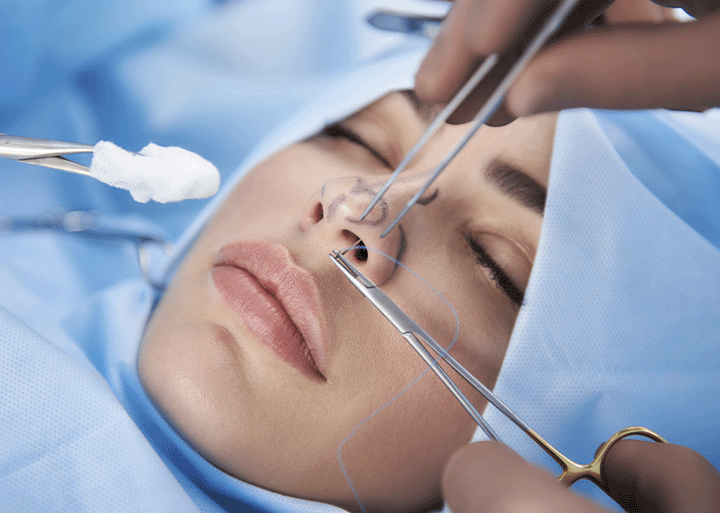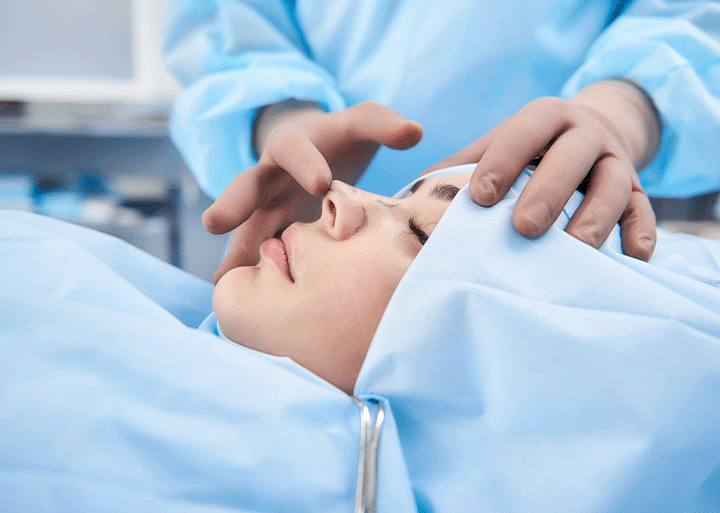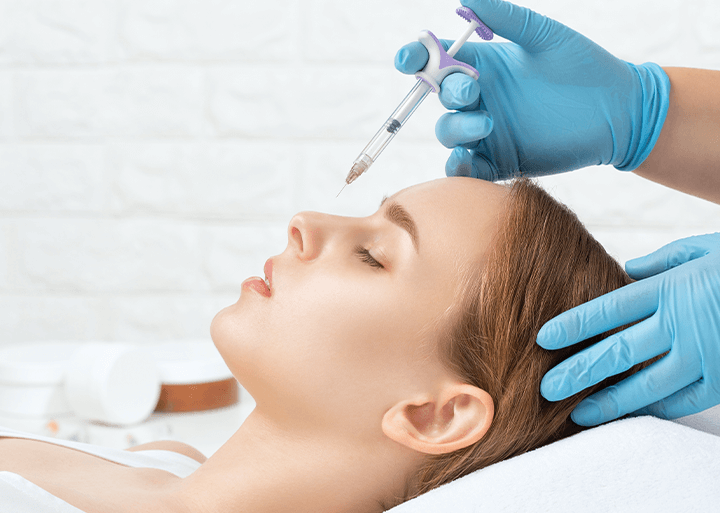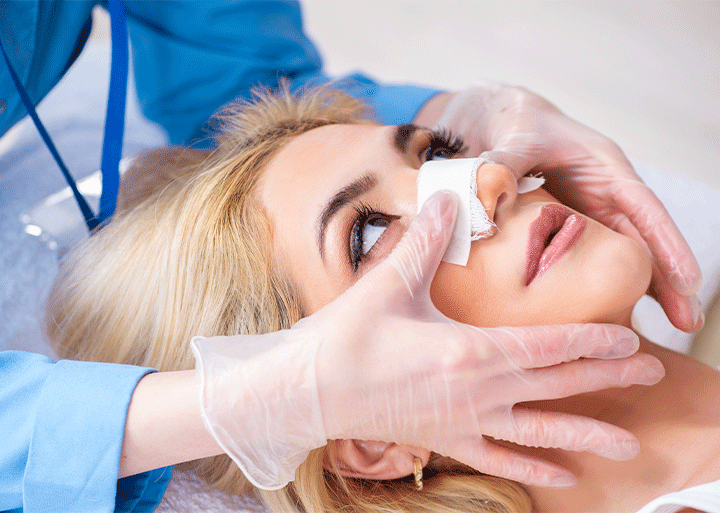
Nasal trauma is an injury to the face and nose area. This type of damage can cause the cartilage of your nose to break or deform.
For this reason, rhinoplasty surgery after nasal trauma is a way to restore your nose aesthetics and function. Nose job is basically done to reshape the nasal cartilage or repair fractures. The surgery is usually performed under anesthesia and the duration of the operation may vary depending on the injury or deformation in your facial area.
Rhinoplasty is performed under general anesthesia, so you do not feel any pain or sensitivity during the operation. An operation takes an average of 4 hours. There are types such as revision rhinoplasty and ethnic rhinoplasty.
The procedure is divided into two as open or closed, in which the number of incisions and incision areas are different from each other. For more detailed information on this subject, one of the best doctors in his field, you can review the rhinoplasty title and other related blog posts on Dr. Fatih Mehmet Hanege's website.
What Are the Types of Nasal Trauma?
Nasal traumas in your nose can be seen due to different reasons. Some of them are more serious and require immediate treatment, while others may be considered less serious. Listed below are the types of nasal injuries.
- Fractures Caused by Falling or Impact: This type of trauma causes the nasal bones or nasal cartilages to break. This condition is usually seen in the upper part of the nose or in the septum area and is accompanied by pain, swelling and bleeding.
- Tissue Damage Inside or Outside the Nose: These ones cause injuries on the inside or outside of the nose. It is mostly seen with edema and swelling on the inner or outer surface of the nose.
- Curvatures of the Nasal Septum: The nasal septum is a structure located in the nose and provides air passage. Curvatures can be caused by trauma, congenital or a disease.
- Nosebleeds: These cause bleeding that occurs as a result of disturbing the blood vessels in the nose. This condition, also called Epistaxis, can usually be easily stopped, but sometimes it can be serious and may require medical attention.
- Tumors or Polyps in the Nasal Cavity: They cause tumors or polyps to form in the nasal cavity. These may obstruct the intranasal air passage and may require immediate intervention.
- Nasal Congestion: This trauma, also known as Rhinitis, usually occurs as an allergic or inflammatory condition and can block the passage of air in the nose.
Why is Rhinoplasty Necessary After Nasal Trauma?
The question of whether rhinoplasty after nasal trauma heals or reconstructs the nose is widely asked among patients. Rhinoplasty is performed to remove this trauma when your nose is damaged for some reason. These damages show themselves largely on the inside of your nose, on your bone and cartilage.
There is a high probability of asymmetry or curvature in your nose, whose physical structure has changed after trauma. This can possibly cause other problems such as difficulty in breathing too. It naturally directly affects your sleep and quality of life then.
In addition, as we mentioned before, aesthetic complaints and dissatisfaction are among the reasons for the desire to have nose job after nasal trauma.
It should be noted that when your nose is damaged, best results can be obtained from rhinoplasty surgeries, which are usually performed within the first 2 weeks. If you pass this period without any appointment, your doctor will advise you to wait an average of 5-6 months. During this time, the tissues inside your nose begin to heal and become ready for rhinoplasty.
In addition, the answer to the question of whether the broken nose can be fixed without surgery is often wondered. In some early-stage cases, the procedure can be performed without using an incision. In these patients, the operation is completed with a tampon and plaster. However, it is important to know that it is not suitable for everyone.
Recovery Period of Post-Nasal Trauma Rhinoplasty Surgery
Nose job after nasal trauma must be performed by a doctor who is an expert in the field of rhinoplasty. Because this choice of yours has a great impact on the results of the operation and therefore the healing process. Your doctor will probably ask you to stop smoking before your surgery, and it would be beneficial for you to keep this habit at least for a while during the recovery period. In addition, you should stop taking blood thinners for a while.
After your rhinoplasty surgery, you should not lie on your face for approximately 1,5 months. Again, you should not wear glasses during the same period. In order for the nose job surgery after nasal trauma to be successful and to avoid any damage, you should avoid heavy exercises that may tire you.
Of course, your healthy diet also affects the recovery time of post-traumatic rhinoplasty. In this process, there is no harm in light walks. It is important that you do not delay the use of the drugs prescribed to you. If you follow your doctor's recommendations as much as possible, your healing process will accelerate and your rhinoplasty surgery will turn out as you imagined.
Dr. Fatih Mehmet Hanege, who has numerous positive patient feedback in the field of rhinoplasty, invites you to his clinic to have the nose you dream of. For more detailed information and treatment plan, you can get a free consultation. Please contact us.




